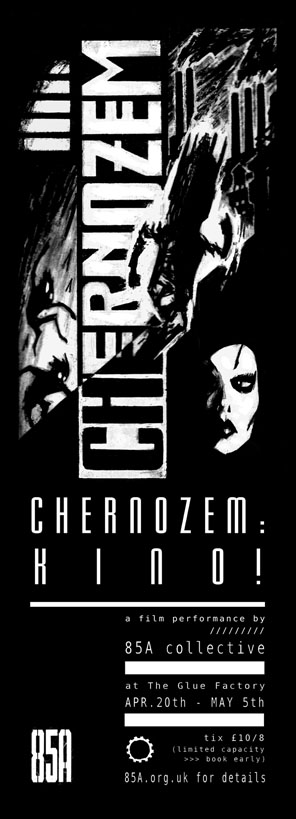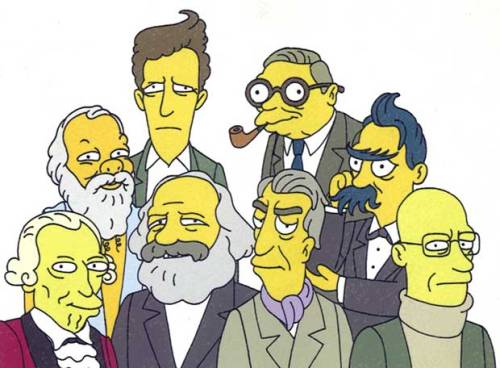Trisha Brown is clearly associated with "post-modern dance." She was hanging about the Judson Memorial Church alongside Yvonne Rainer and Steve Paxton: this loose affiliation of choreographers would ask a series of critical questions about movement that became known as post-modern dance. Rainer became a film-maker - although she made a triumphant return to choreography - and Paxton pioneered contact improvisation. Brown is arguably, however, the most consistent in her career as a choreographer, as she has her own company and her work now sits in the repertoire of ballet companies across the world.
 85A - through the use of overworked metaphor - could be identified as the natural descendants of the Judson Memorial gang. They don't use dance - Chernozem, their entry into the GI Fringe, was an expanded film experience - but they are associated with a specific venue (The Glue Factory) and enjoy busting boundaries. And where Rainer, Brown et al were affiliated, the 85A Collective has a similar feel, with individual members holding their own yet becoming part of something more impressive.
85A - through the use of overworked metaphor - could be identified as the natural descendants of the Judson Memorial gang. They don't use dance - Chernozem, their entry into the GI Fringe, was an expanded film experience - but they are associated with a specific venue (The Glue Factory) and enjoy busting boundaries. And where Rainer, Brown et al were affiliated, the 85A Collective has a similar feel, with individual members holding their own yet becoming part of something more impressive.Brown's company arrived at Tramway with an eclectic mix: three "classics" and a new piece. Leah Morrison opened the account with If You Could See Me from 1994. Notable as a solo where the dancer faces away from the audience, it has the particular style that identifies Brown: rejecting flashy displays of technique, the movement is precise, closer to martial art than ballet. While it is a strong statement of Brown's interest in challenging the predictable relationship between audience and performer - Morrison never peeks at the crowd - Tramway's unique space adds a tension - the solo almost becomes a trio, with the two pillars at the side of the stage lit up like immobile partners in dance.
The contrast with the opening of Chernozem could not be more powerful: 85A are all about "hot" media, dragging the audience into character and forcing them to watch the opening scenes of the film on tiny screens. Throughout Brown's performance, the audience is invited to observe - Chernozem insists. Pushed around on carts, chased by dominatrix prison guards, pushed between the hulking scenery, they immerse and cajole. Brown's choreography is "cool", so self-contained, it barely acknowledges the audience. For MG: The Movie happens as if behind a screen, and the pas de deux of Les Yeux et L'Ame are all about the connection between performers.
Nipping back - realising that I started off going on about post-modernism, and probably need to justify my pretentious introduction - it strikes me that the post-modern instinct is vital to both choreographer and collective. They reject easy definitions of their genre - Brown might use technically skilled dancers, 85A might make a film - but they go far beyond the expected. Yet in their different attitudes to the audience, they make a strikingly similar point about how art is created by the observer. For 85A, the observer is togged out in prison gear: for Brown, the audience has to work hard to enter into the dance's world. My easy and lazy definition of post-modernism - that it takes away the possibility of a central, defining characteristic to just about anything - is satisfied by both works.

No comments :
Post a Comment